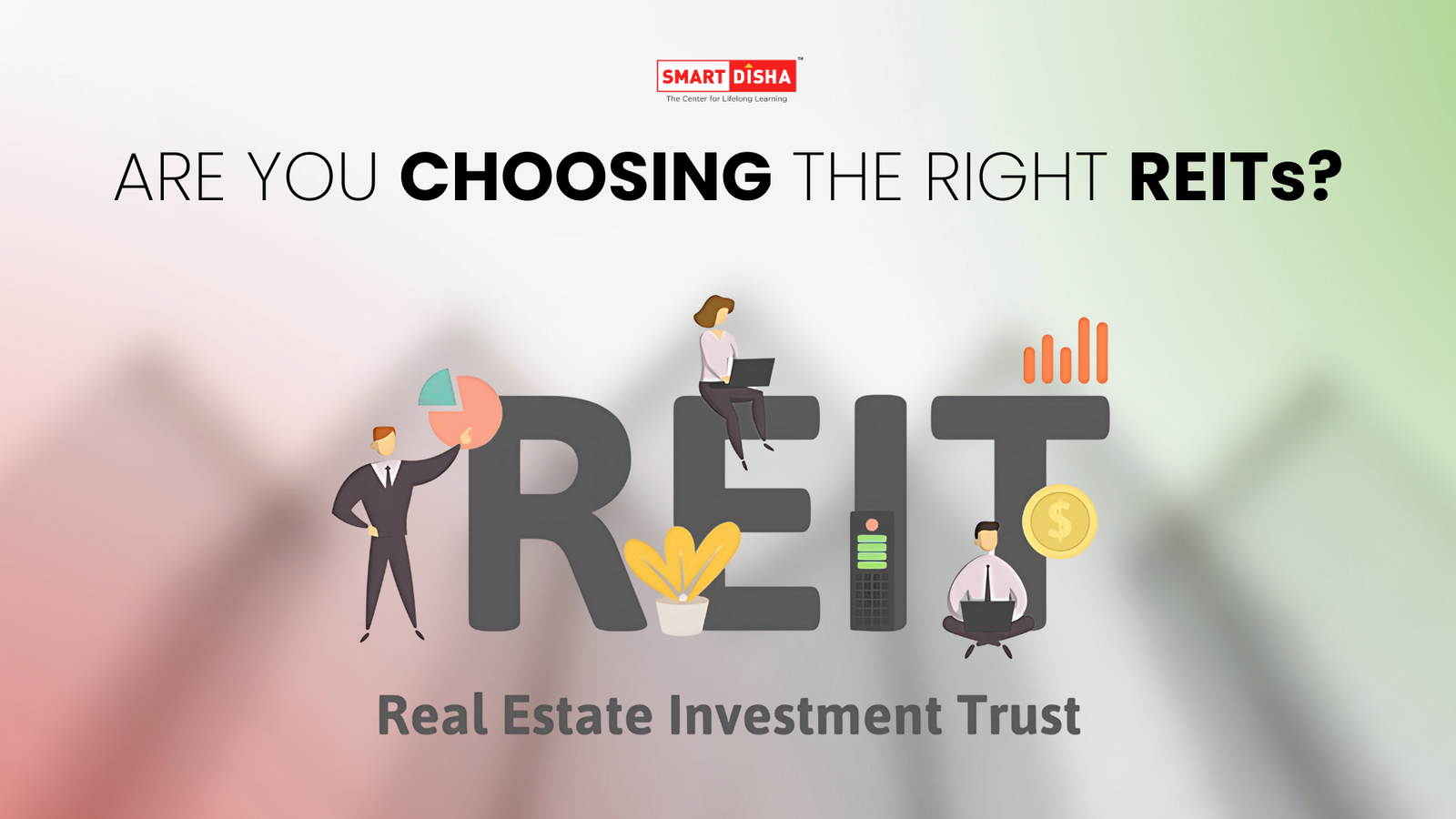When investors think of real estate, they often picture buying land, renting flats, or investing in commercial spaces. While these approaches work, they involve high capital, operational complexities, and limited liquidity. This is where REIT investment strategies come in offering real estate exposure without the challenges of owning physical property. REITs provide steady dividends, potential capital appreciation, and portfolio diversification, often serving as a hedge during volatile equity markets. However, choosing the right REIT requires more than chasing high yields. Beneath the surface lie key metrics, operational approaches, and sector-specific risks that demand careful evaluation. In this guide, we’ll explore what makes a REIT valuable, what to analyze before investing, and how to build a REIT-based portfolio with clarity and confidence
What Are REITs and How Do They Work?
REITs are companies that own, manage, or finance income producing real estate assets everything from office parks and malls to warehouses and healthcare facilities. They’re required by law (in India, as per SEBI REIT regulations) to distribute at least 90% of their net distributable cash flows to unitholders, making them an ideal tool for passive income
There are two core types of REITs:
- Equity REITs: Own and operate physical properties (e.g., retail, industrial, commercial)
- Mortgage REITs: Invest in loans and mortgage backed securities
India currently supports listed equity REITs, offering access to assets like office parks in urban hubs (e.g., Embassy, Mindspace, Brookfield)
Why Consider REITs in Your Investment Strategy?
| Benefit | Explanation |
| Regular Income | Predictable dividend payouts, typically quarterly or semi annual |
| Liquidity | Listed REITs can be bought/sold like stocks on the stock exchange |
| Diversification | Adds real asset exposure to portfolios dominated by equity or debt |
| Professional Management | Experienced real estate teams manage leasing, development, and finance |
| Low Entry Barrier | Requires far less capital than buying actual property |
Key Metrics to Analyze in a REIT
Before investing, don’t just look at dividend yields. Here’s what truly matters:
1. Funds from Operations (FFO) & Adjusted FFO (AFFO)
- FFO: Adds back depreciation and removes capital gains from the sale of properties
- AFFO: Adjusts for recurring expenses (maintenance, leasing costs), offering a better view of real cash flow
2. Net Asset Value (NAV)
NAV represents the per unit value of the REIT’s real estate holdings. A REIT trading significantly below NAV could be undervalued unless there’s a structural issue
3. Occupancy Rate
High occupancy reflects strong property demand. Anything consistently below 85% deserves deeper scrutiny
4. Leasing Structure
- Long-term leases with reputed tenants indicate stability
- Watch for WALE (Weighted Average Lease Expiry). Higher WALE = more predictability
5. Debt Profile
A Debt to Asset ratio under 40% is generally manageable. Look for REITs with staggered loan maturities and low interest burdens
6. Geographic Diversification
Are properties concentrated in one city or spread across high growth zones? Diverse holdings reduce location risk
Sector Exposure: Understanding Different REIT Categories
| REIT Focus | Strengths | Weaknesses |
| Commercial | Stable tenants, long leases | Impacted by WFH trends post-COVID |
| Retail | High yield potential in prime zones | E-commerce competition, footfall risks |
| Industrial | Rising demand due to logistics & warehousing | Limited tenant base |
| Hospitality | Upside in economic booms, tourism | Highly cyclical, sensitive to travel bans |
| Healthcare | Predictable cash flow, aging population theme | Regulatory uncertainty, specialized spaces |
| Residential | Urban demand growth, recurring income | Government rent controls, vacancy cycles |
Strategic Filters Before Picking a REIT
Ask these questions before hitting “buy”:
- Who are the tenants?: Global names like IBM or Amazon offer better security than unlisted startups
- Are rentals escalating yearly?: Contracts with annual escalators (5–7%) are a sign of growth
- What’s the location quality?: REITs with Grade A assets in Tier 1 cities hold long term value
- How diversified is the tenant base?: No more than 15–20% revenue should come from one tenant
Example Comparison of Indian REITs (2025 Snapshot)
| REIT Name | Occupancy | Dividend Yield | WALE | Sector Focus |
| Embassy REIT | 86% | 6.5% | 6.9 yrs | Commercial |
| Mindspace REIT | 89% | 6.2% | 6.8 yrs | Office Parks |
| Brookfield REIT | 84% | 6.3% | 7.1 yrs | Commercial |
| Nexus Select REIT | 94% | 5.7% | 6.5 yrs | Retail Malls |
Data for illustrative purposes only. Investors should refer to official filings and disclosures
Risks in REIT Investing
Like any asset class, REITs carry risk. Be prepared for:
- Interest Rate Sensitivity: Rising rates can reduce REIT valuations
- Tenant Risk: Overexposure to one tenant or sector is dangerous
- Market Liquidity Risk: In low volume REITs, exits may be hard without price impact
- Regulatory Changes: Taxation, leasing norms, or REIT guidelines may evolve
How to Invest in REITs
- Direct Stock Exchange Purchase: REIT units are listed on NSE and BSE
- Mutual Funds or ETFs: Some funds offer indirect exposure to REIT portfolios.
- SIPs in REITs: Useful for rupee cost averaging, especially for newer investors
Sample Portfolio Allocation Strategy (Balanced Investor)
| Asset Class | Allocation % |
| Equities | 55% |
| Debt | 25% |
| REITs | 15% |
| Gold/Commodities | 5% |
REITs help stabilize income and reduce equity volatility, especially when paired with fixed income
Final Thoughts
REITs are no longer a niche product in India they’re a mainstream investment tool for those looking to blend yield, diversification, and real estate exposure. But just like choosing stocks, picking REITs requires a discerning eye
It’s not about the flashiest dividend or most TV coverage. The best REITs offer a blend of:
- Steady growth
- Quality tenants
- Predictable leases
- Responsible debt management
- And exposure to long term urban infrastructure
Treat REITs like businesses. Dig into the annual reports. Evaluate management. Question tenant risk. Understand location trends
And most importantly align your REIT investments with your goals: whether it’s monthly income, long-term growth, or a passive wealth compounding tool
A good REIT doesn’t just pay it performs
“Since REITs are highly sensitive to interest rate changes, it’s important to understand how banks and financial institutions react. Our article on Banking and Finance Stocks explains this relationship in depth.”



